Perfect Prime Rib
Prime Rib is always an impressive dish to present to your family and friends. It looks like it takes loads of work, but in truth, it’s one of the simplest recipes you can make. Follow my easy method to make a standing rib roast perfect for any special occasion.
One of my favorite things to make for a special occasion or holiday meal is a good, simply Perfect Prime Rib. It’s what I always make for Christmas dinner but rarely during the rest of the year because it can be fairly expensive.
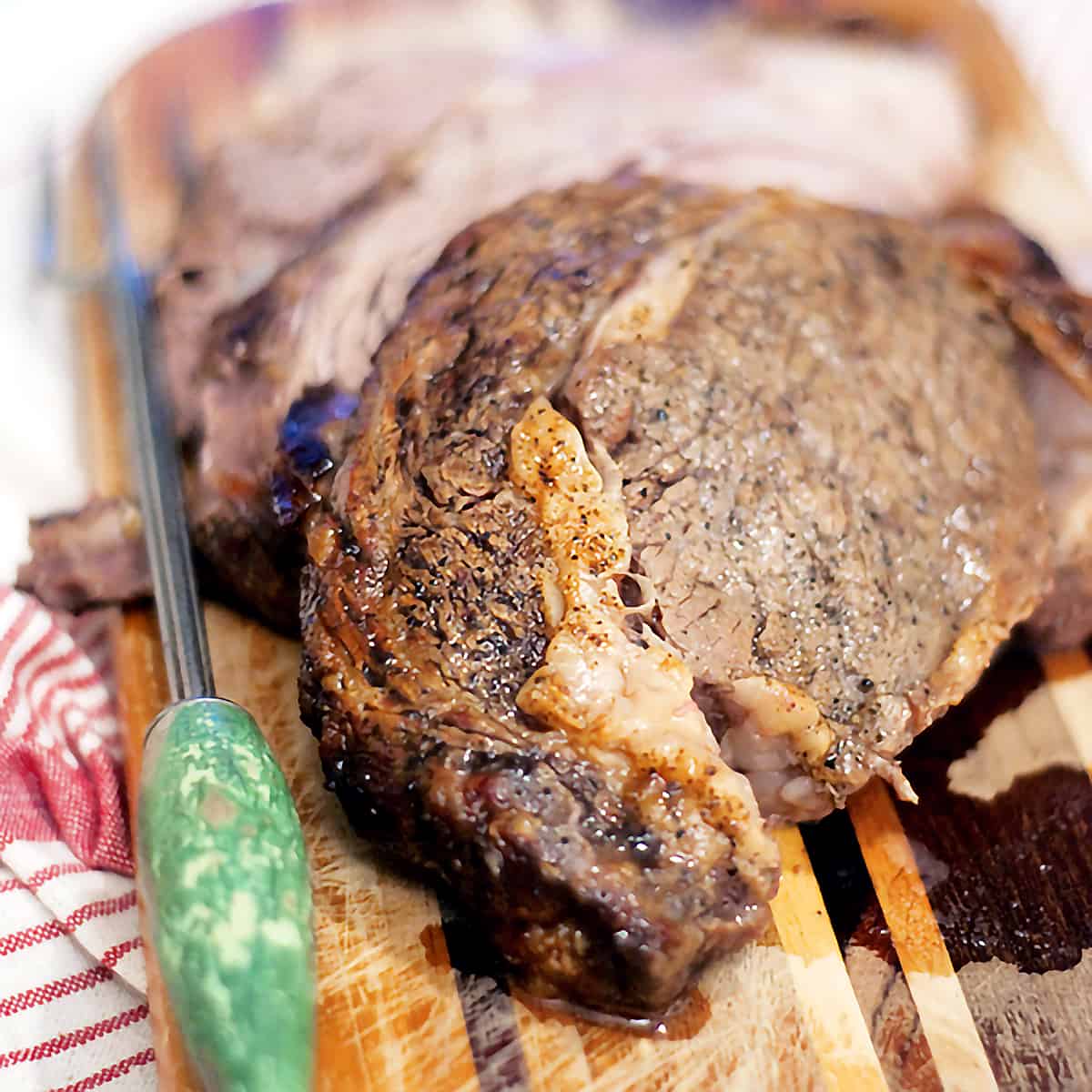
Because of the cost of a prime rib roast, many people are afraid they’ll mess it up somehow and I totally get that! However, it’s not nearly as difficult as you might think. It’s really just like cooking a roast.
Making a gorgeous rib roast can be impressive and can give your inner chef a boost of self-confidence. The two most important things to remember are (1) have a good meat thermometer so that you can watch the temperature closely toward the end of cooking and (2) allow for adequate resting time before serving.
There are lots of recipes out there for seasonings for prime rib, but personally, I prefer just salt and pepper. It really lets the luscious flavor of the beef shine. But if you like other herbs and spices, go for it!
If you’ve never cooked a prime rib, be sure to read through the instructions several times to make sure you understand the procedure, and then just forge ahead with confidence.
🛒 Ingredient Notes
This post contains affiliate links. Lana’s Cooking is reader-supported and earns a tiny commission at no extra cost to you when you shop from our links.
The ingredients? All you need are a rib roast, salt, and pepper. That’s it.
👉 HOW TO PURCHASE A PRIME RIB
When purchasing prime rib, you should plan on one rib per every two people you’ll be serving. Look for a roast with consistent marbling. “Marbling” is simply fat, and it’s what gives the beef tenderness and excellent flavor!
Ask the butcher to separate the roast from the bones and tie them back with butcher’s twine. That step will make slicing and serving so much easier!
🔪 Perfect Prime Rib Cooking Method
👉 PRO TIP: It’s important to remove the roast from the refrigerator several hours before cooking so that it can come to room temperature. This will allow for even cooking.
- When you’re ready to cook, preheat the oven temperature to 450 degrees.
Season the Roast
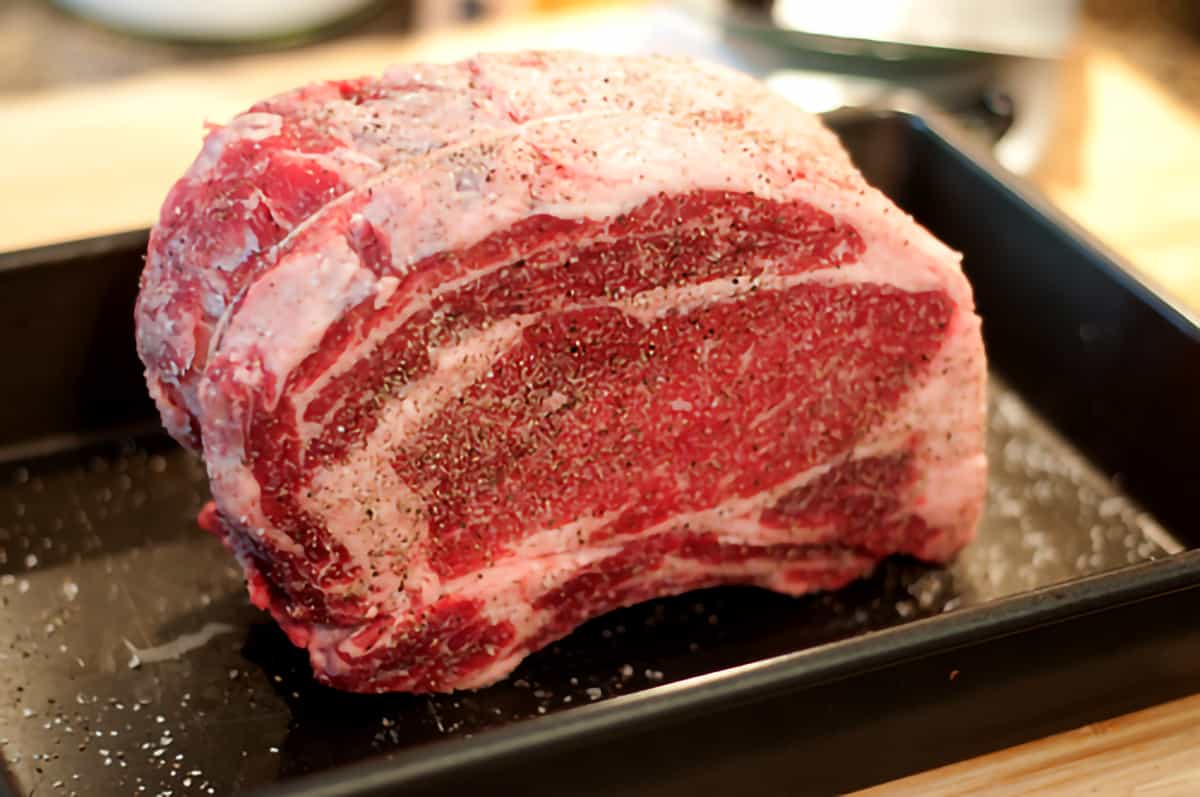
- Remove any packaging and pat the roast dry with paper towels. Generously sprinkle all surfaces with salt and ground black pepper. Place the roast in a heavy roasting pan with the rib bones down.
👉 PRO TIP: You don’t need to cook the roast on an oven rack as the rib bones act as the rack.
Cook to Desired Doneness
- Cook for 15 minutes, then decrease the temperature to 325 degrees, and continue cooking approximately 15 minutes per pound for rare, 17 minutes per pound for medium rare, and 20 minutes per pound for medium.
👉 PRIME RIB COOKING TIMES
The cooking time per pound is merely a guideline, and measuring internal temperature is critical for a correctly cooked roast. Start checking the internal temperature (use an instant-read meat thermometer) in the thickest part of the roast about 45 minutes before the estimated end of cooking time.
The temperature should read 120-125 for rare, 130-135 for medium-rare, and 140-145 for medium.
I don’t cook prime rib any further than medium. However, if you like yours more on the well-done side, go ahead and cook it to suit your preference!
Let it Rest
- When the desired temperature is reached, remove the roast from the oven, cover the pan with foil, and let the roast rest for a minimum of 30 minutes before carving.
Carve and Serve
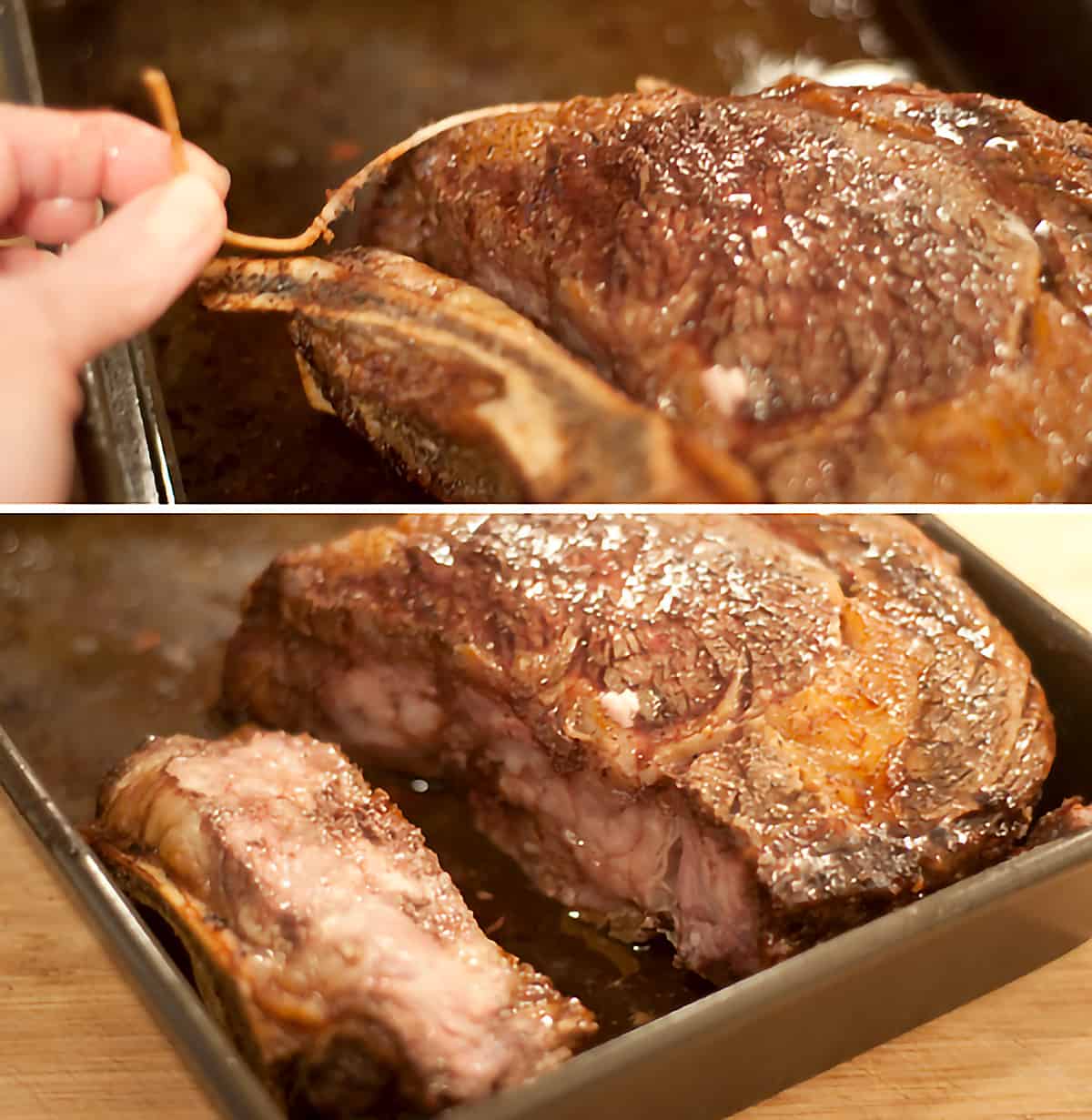
- When ready to serve, cut and remove the twine. Lift the roast off of the bones and place it on a cutting board.
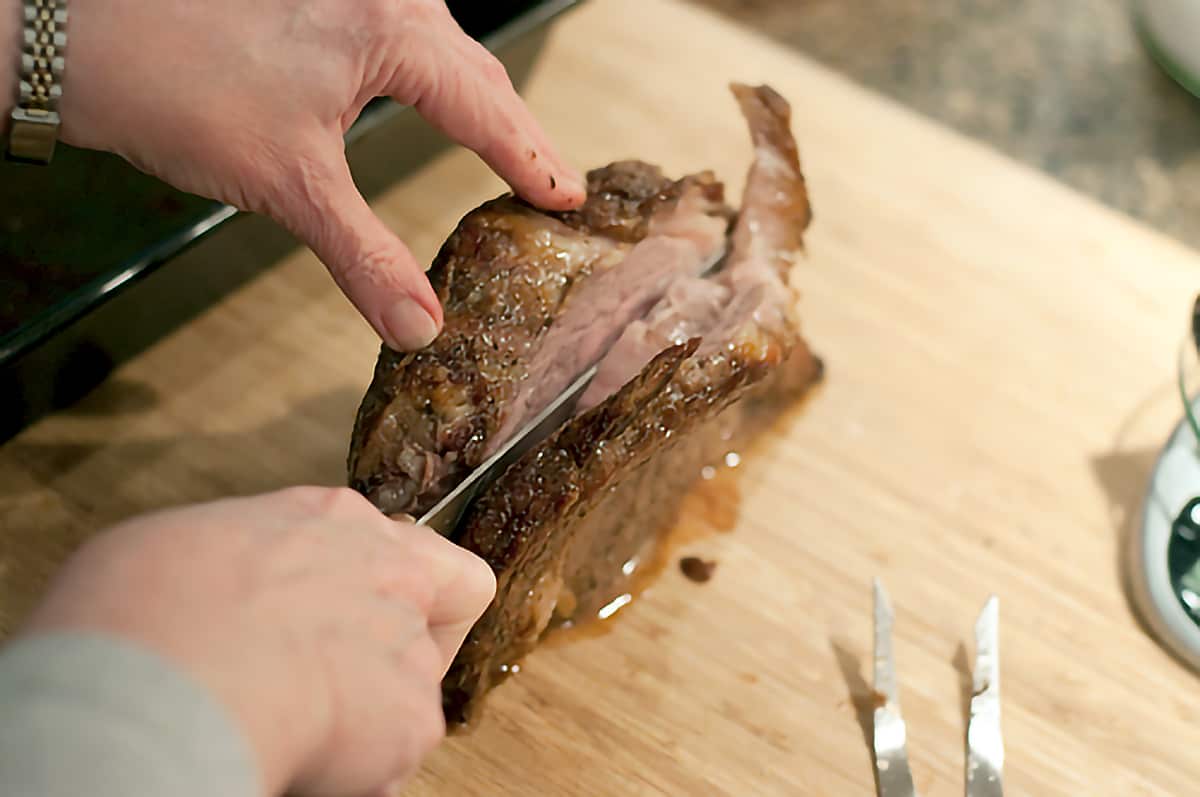
- Use a very sharp knife to slice as thick or thin as you like. Serve with some of the pan juices drizzled over each slice.
👉 PRO TIP: About those bones you removed… well, that’s the cook’s treat, you know. Save those and reheat them later to enjoy by yourself or with someone else who doesn’t mind eating with their fingers :-)
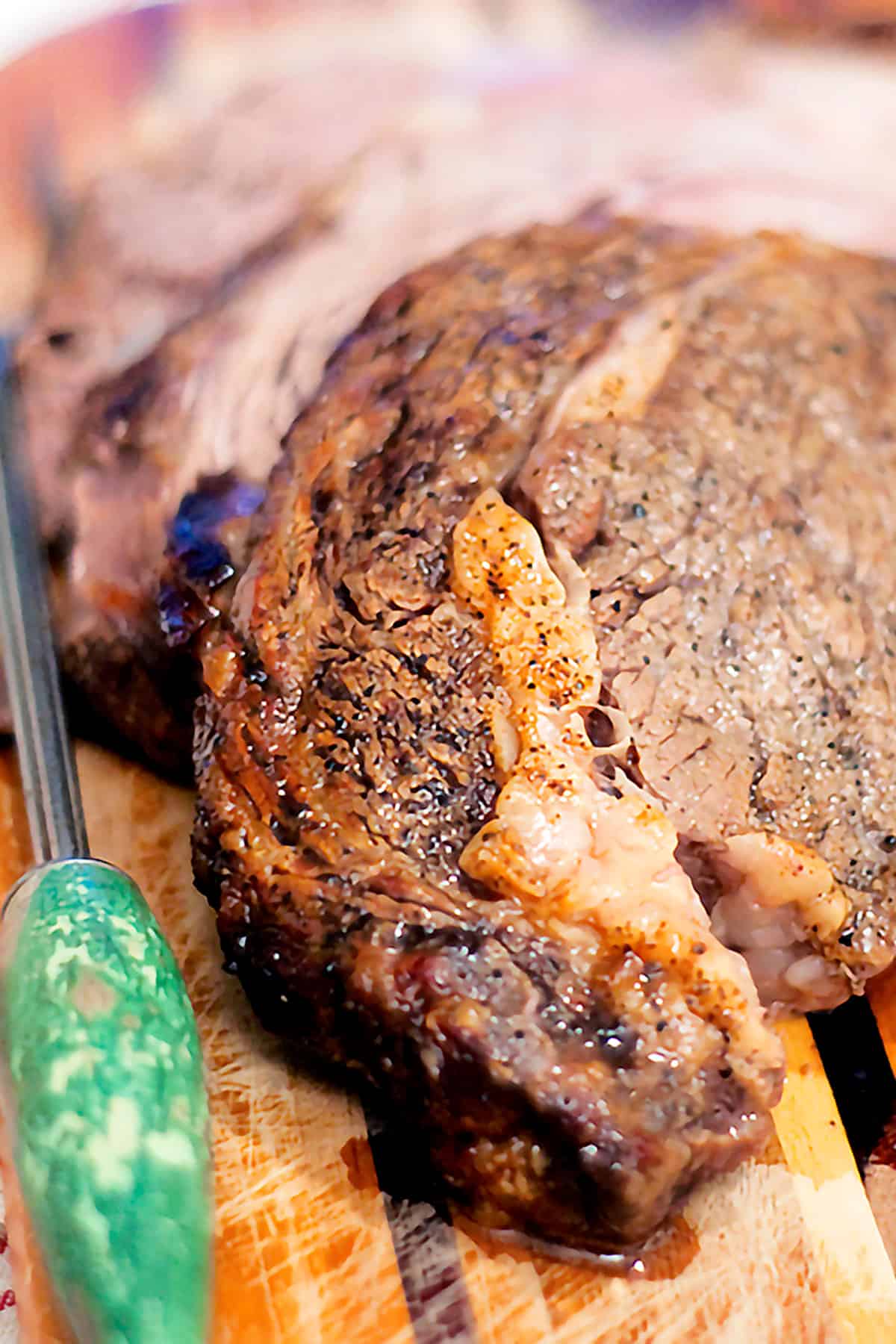
🍽️ Serving Suggestions
Serve with baked potatoes, potatoes au gratin, or crispy roasted potatoes and a green vegetable like roasted asparagus. A fresh green salad with a classic vinaigrette dressing is always good as a starter, and a loaf of honey wheat bread goes perfectly! I also like to offer a creamy horseradish sauce on the side.
❓Questions About Prime Rib
Prime rib (or rib roast) and ribeye steaks do come from the same cut of meat. The difference is in how they are cooked. A prime rib is usually cooked low and slow after an initial burst of heat to sear the outside. A ribeye steak is normally cooked very quickly on a hot grill or pan.
Count the number of rib bones in the roast. You’ll need one rib bone for every two people you plan to serve. For example, if you’re serving six people, purchase a prime rib with three bones.

Questions? I’m happy to help!
If you have more questions about the recipe, or if you’ve made it and would like to leave a comment, scroll down to leave your thoughts, questions, and/or rating!
Thanks so much for stopping by!
📖 Recipe
Want to save this recipe?
Enter your email below and get it sent straight to your inbox.
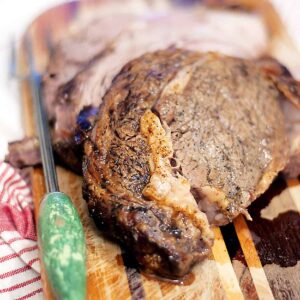
Perfect Prime Rib
Ingredients
- 10 pounds Bone-in Prime Rib roast or oven roast (4 ribs for serving 8 people)
- Salt (kosher salt preferred)
- Pepper
Instructions
- Remove the roast from the refrigerator several hours before cooking so that it can come to room temperature.
- When ready to cook, preheat the oven to 450 degrees.
- Generously sprinkle all surfaces with salt and ground black pepper. Place the roast in a heavy roasting pan with the rib bones down. You don’t need a rack with a prime rib as the bones act as the roasting rack.
- Cook for 15 minutes, then decrease the temperature to 325 degrees and continue cooking approximately 15 minutes per pound for rare, 17 minutes per pound for medium rare, and 20 minutes per pound for medium. *See more cooking time information in the notes below.*
- When desired temperature is reached, remove the roast from the oven, cover the pan with foil and let it rest for 30 minutes before carving.
- When ready to serve, cut and remove the twine. Separate the roast from the bones. Slice and serve.
Notes
- When purchasing prime rib, you should plan on one rib per each two people you’ll be serving. Look for a roast with consistent marbling.
- Ask the butcher to separate the roast from the bones and tie them back with butcher’s twine. This will make slicing and serving much easier.
Nutrition Information
Nutrition information is calculated by software based on the ingredients in each recipe. It is an estimate only and is provided for informational purposes. You should consult your healthcare provider or a registered dietitian if precise nutrition calculations are needed for health reasons.
🧾 More Delicious Beef Recipes
— This post was originally published on February 19, 2015. It has been updated with additional information.
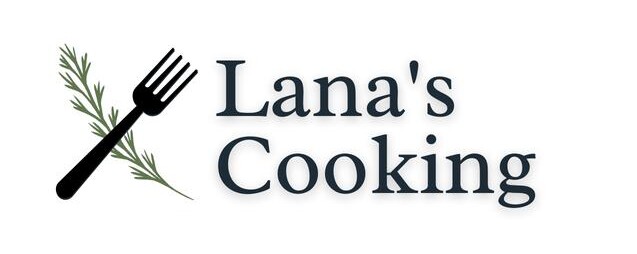
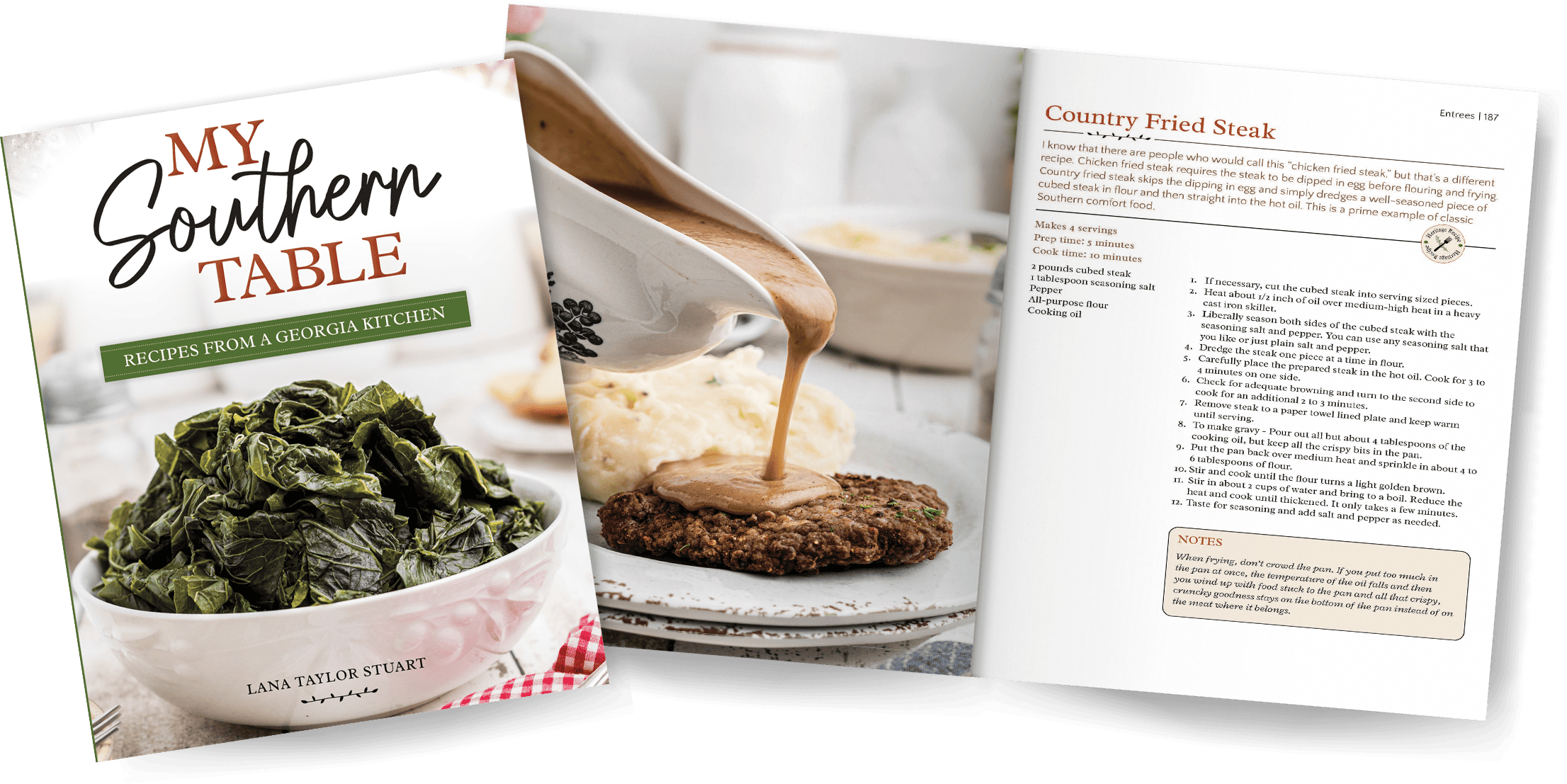
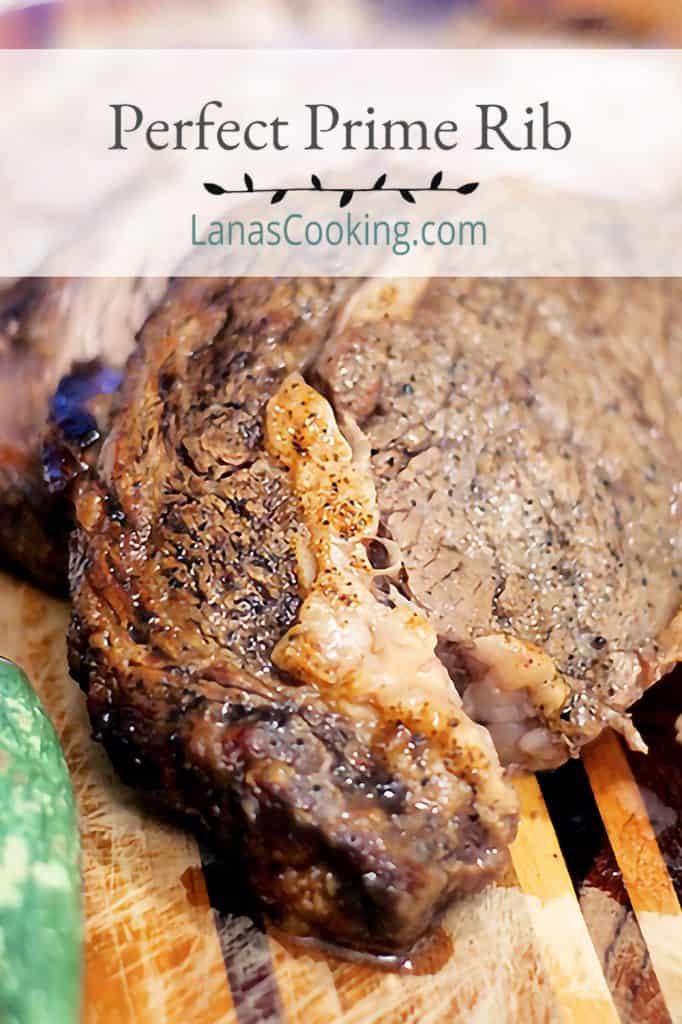
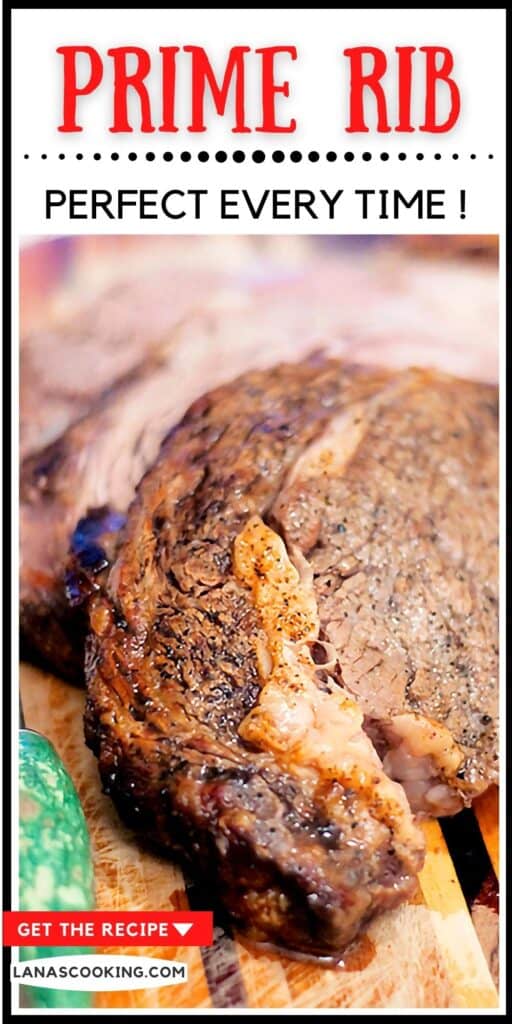
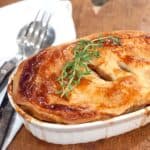
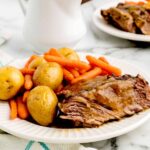
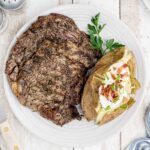
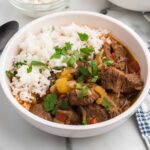
We are ordering a 6 lb prime rib for Christmas dinner but can only collect the day before. What is the best way to reheat the prime rib in the oven? We like it cooked to medium well. Thank you in advance for your help.
So you’re reheating an already cooked prime rib, correct? In that case, I would order the roast undercooked because reheating is going to cook it further. Let the roast come to room temperature for at least an hour before heating. Preheat the oven to 250F, and add the sliced prime rib to a baking pan with a few tablespoons of beef broth. Cover the pan tightly with foil and warm it in the oven until the heated through, about 10-15 minutes.
Why do you advise not cooking Prime Rib to more than medium done? My entire immediate family prefers med Well. In my humble opinion, med well is still tender and Juicey. There are lots of us who prefer med well and we are not using a 800 degree grill to cook our beef with. I agree with keeping the seasonings simple and everything else you said, just can’t take raw (in my view) beef of any kind. Liked-minded people and I are simply ignored. Why?
Not really sure why you’ve left two comments on the same post, but I’ll respond to the last one here. The reason you don’t cook a prime rib to well done is because it is a very large piece of meat and by the time the interior is well done, the outside will be burned. Very burned. When cooking to medium, there are always more done areas on the end. It’s not possible to cook a roast that size to the same temperature throughout. Those who like theirs done can always take a portion from the ends. After slicing the roast, if you want yours cooked more, you can still return the individual portions to the oven to cook them some more.
Of course, if you want to cook your prime rib until it’s well done in the center, go right ahead. It’s not like I’m making up unbreakable rules for cooking roasts here. You cook anything you want in any way you want in your own kitchen.
Why is your recommendation to never cook a Prime Rib beyond medium doneness. My immediate family prefers medium Well and that is still very juicey and tender. I was of the impression that practice came from restaurant chefs who were concerned with timing. The faster it cooks the more customers you can service. I used to always ask for well done beef in restaurants, but it always came out tough with a burnt crust and no taste. It was always overcooked and then someone suggested I try med well and it worked. I even tried Med. but that was a bit too red and raw in the middle for me. My question is why do most Steak houses grill with such high tempertures?
great advise but would add a clove of garlic crushed to a paste with salt and rubbed on roast with a sprinkle of rosemary—over the top
I am with you on just simple preparation when it comes to a great piece of meat – Yum!!!
We love prime rib but never make it at home but I need to change that! Yours looks perfect!
Great tip about letting the roast come to room temperature before cooking. Makes all the difference. Lovely prime rib, Lana. Now I’m starving!
That looks so very delicious! I may be inspired to give it a shot!
Miss P
Boy, you can beet me cooking. This is done to perfection. Wish I had a slice.
I still can’t make angel biscuits :-)
Aha! Now that makes more sense. Thought I was just stupid.
Thanks Lana- will definitely try this.
I’m glad you asked, Vicki! And happy that I could clarify it for you.
Oh I am definitely trying this!! I also like to keep it simple with just salt and pepper.
That’s my preference, Ashley. In my opinion, all a prime rib really needs is salt and pepper. It’s such an expensive cut that I like to let it’s natural flavor shine.
I’m confused! “Have the Butcher remove the bones.” “Place with the ribs bone down”. ?!?!?!
I went back and clarified that sentence. The butcher separates the roast from the bones and then ties it all back together with twine. It’s the standard way of preparing a prime rib so any butcher will understand what you’re asking for.
We did exactly the same thing for Valentines! Much better dinner at home than most restaurants. Prime Rib, cooked to 125 Deg., Baked stuffed potatoes with cheddar, sour cream, scallions, butter, and green beans with almonds. Topped off with a nice Chardonnary (J Lohr), and Carrot Cake..Bon Appetit!!
that’s a nice piece of meat…cooked to perfection
Thank you so much!